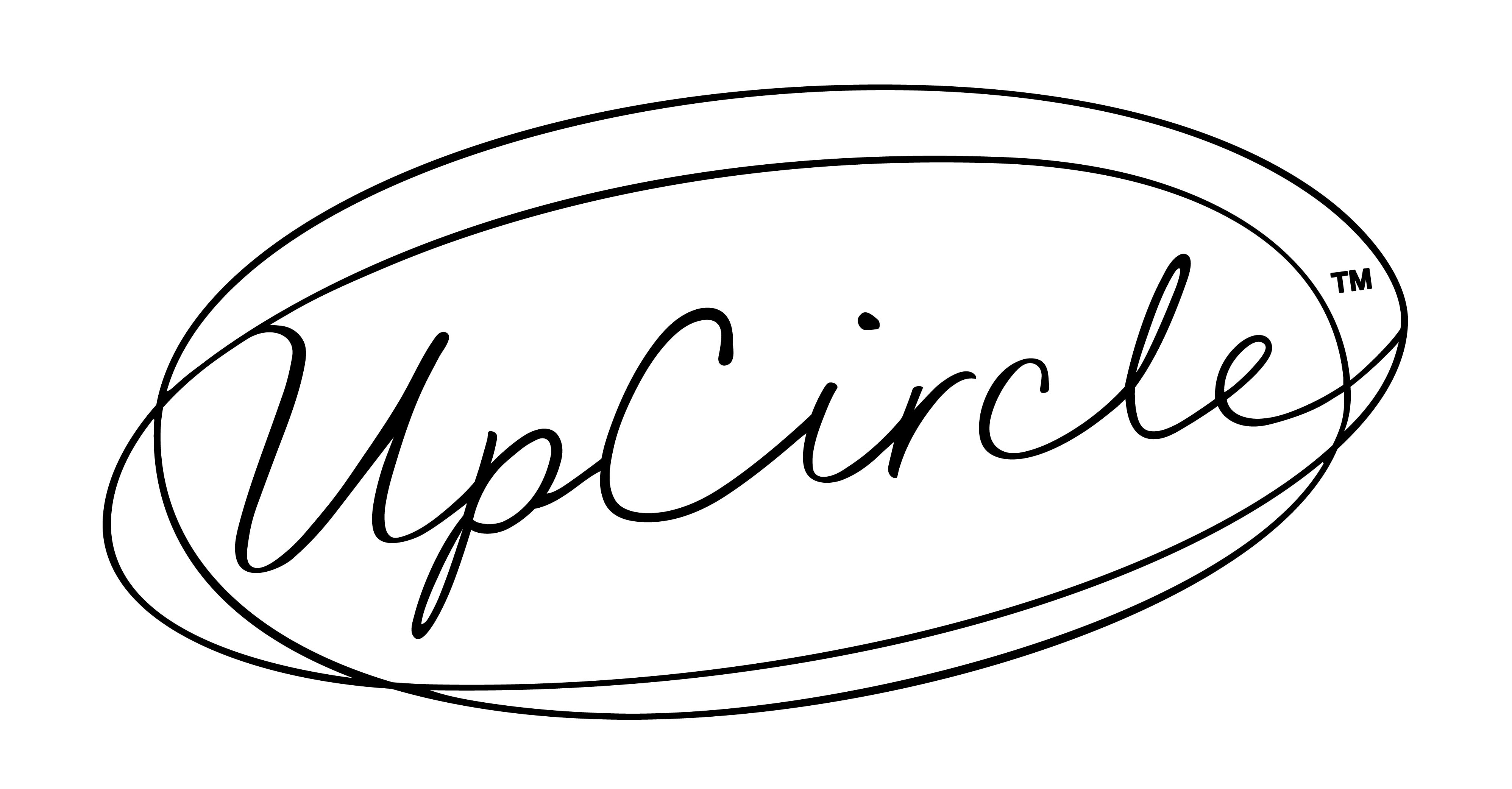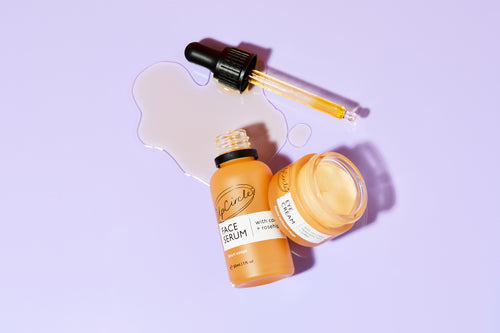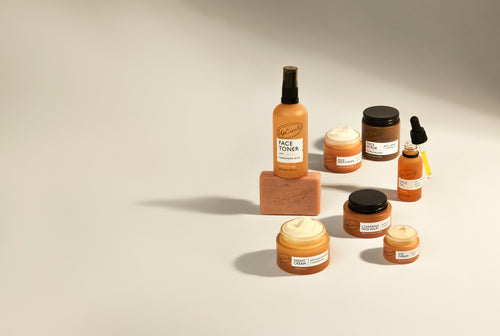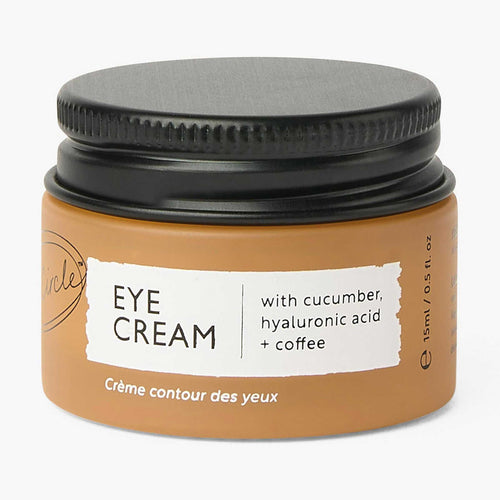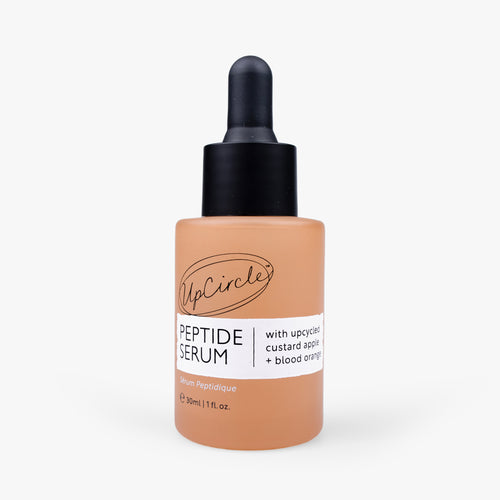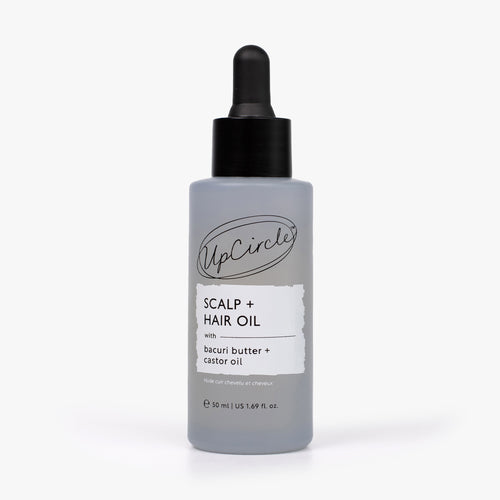What we put on our skin is important. But often it can be tricky to fully comprehend what goes into the products we use. The cryptic ingredients on the back of beauty bottles look more like a concoction for a dark magic spell than a list of skin-friendly ingredients. If you don’t know what’s in your skincare, how can you be sure that it’s not actually causing you more harm than good?
There are plenty of nasties snuck into face creams, exfoliators and bottles of body wash that have been linked to hormonal disruptions, increasing the risk of different cancers and skin irritation. Yikes. Any product that you put onto your skin will be absorbed through your epidermis (the layers of skin cells) and into your bloodstream - both the good and the bad. That’s right, all those mind-boggling ingredients go into your body! To guarantee that your skincare does what it’s supposed to, without contribution from hidden nasties, we’ve made a helpful guide to all the toxic skincare ingredients so that you can spot them more easily, and then avoid!
SLS and SLES
SLS (Sodium Lauryl Sulfate) or SLE (Sodium Laureth Sulfate) are compounds formed from petroleum and plant sources such as coconut and palm oil. They are used in skincare products to create a lather when used on your skin, such as shampoo, body wash, face wash, mouthwash and toothpaste. This gives us the illusion of being cleaned because we associate soapy suds with cleanliness.
Although it’s a myth that they’re carcinogens, sulfate compounds can cause skin irritation, particularly around your eyes and mouth. This is because they strip your skin of the natural oils that it needs for protection, giving you that ‘squeaky clean’ feeling –– when in fact your skin is too clean. This can cause major skin irritation, particularly if you’re prone to reactions, or have sensitive skin, and can also contribute to acne.
Because these synthetic sulfate compounds come from sources like petroleum and palm oil, they aren’t great for the environment either. Petroleum products have a bad name for contributing to climate change, pollution, and greenhouse gases. Palm oil isn’t wonderful either, causing deforestation, as the beautiful tropical rainforest is destroyed to make room to grow more and more palm trees. If this wasn't bad enough, when we wash these products down the drain, we put sea life at risk, and that’s just plain unfair. #ILoveTurtles
Butylated Hydroxyanisole (BHA)
Butylated Hydroxyanisole, or BHA, is a widely used synthetic antioxidant that is found in foods, cosmetics and skincare products like exfoliants and perfumes. It’s used to preserve the fats and oils in these products and extend their shelf life. Sounds alright, doesn’t it? For one, we normally see ‘antioxidant’ and think of superfoods like blueberries, kale and beans, which are good for us. Two, extending the shelf life of lotions and potions is arguably a good thing because it stops them going bad. That’s what you would think, but BHA is actually bad news for your skin.
The word ‘butylated’ should be enough to put you off. But if that doesn’t cut it, then the fact that the National Toxicology Program has found BHA to be ‘reasonably anticipated to be a human carcinogen’ should. Yep, you read that right, carcinogen. In one study, when it was ingested by animals, BHA caused benign and malignant tumours, while in another study BHA caused liver cancer in fish. Although this was caused by consuming BHA, the same report noted that humans can be exposed to BHA through applying beauty products that contain it. Although small amounts of BHA do not cause significant harm to us, by eating food and using skincare products that contain it on a daily basis, you can be exposed to an unsafe level of BHA. If you think of how many times over your life you could be applying skincare products containing BHA onto your skin, it certainly adds up. This puts you at risk of all the negative bodily effects of BHA over time. Not ideal.
Parabens
Parabens are now (and rightly so) a taboo in the beauty world. Once found in thousands of beauty products – from makeup to moisturizer, shaving gel to shampoos –– the rate of parabens in the products available is decreasing. But there are still plenty of products out there that still use them. So what’s the hype about?
Parabens are a not-so-nice family of chemicals that are used as preservatives in beauty products, normally to prevent the growth of harmful bacteria. If you look carefully enough, you’ll find them everywhere, from your bathroom to your kitchen cupboard. This cumulative exposure to parabens overloads our bodies with chemicals that contribute to a wide range of health problems.
Parabens can penetrate the skin and mimic estrogen in the body by disrupting our delicate hormonal balance, potentially causing breast cancer, skin cancer and a decreased sperm count –– none of which are what you want. Longer chain parabens such as propyl and butylparaben and their extensions isopropyl and isobutyl parabens aren’t any kinder, as they have been found to potentially disrupt the endocrine system and cause reproductive and developmental problems. An easy way to spot the culprits is to see if any of the ingredients on the back of beauty products end in ‘-paraben’, such as methylparaben, propylparaben, butylparaben, and ethylparaben. If you see any of these critters on the back of bottles, maintain eye contact and SLOWLY back away.
PEGs (not the wooden ones)
No, not the wooden clips you use to hang up your washing. PEGS (polyethylene glycol) are tiny plastic beads in face, lip and body scrubs, as well as toothpaste. They are used because they are gentler on the skin than more grainy natural exfoliators like walnut shells or rice. This sounds like a good reason to include them in your favourite body scrub, right? Well, these small plastic beads have a dark side.
When it is used on skin, polyethylene acts as a skin irritant and can cause major skin issues. Not only can PEGs cause skin irritation, but they are also often contaminated with 1,4-dioxane during processing, which is considered a potential human carcinogen and can cause liver and kidney damage. This is bad, obviously. But the damage goes further –– not only are PEGs bad for us, they are also bad for the environment, as these plastic beads can also end up polluting our oceans, as they are not filtered out by our sewage systems. This means that they can be consumed and cause harmful effects to fish and marine life who have no say in the matter.
Retinol
Prized as the cure to anti-ageing, retinol is thought by many to be the beauty industry’s star ingredient for creating soft, youthful skin. It works by sinking into your skin and speeding up the cell turnover cycle, which causes your body to develop a fresher layer of skin quicker, making your skin appear younger. Again, on the “face” of it (sorry, couldn’t resist) this could be a good thing… Well, unfortunately, retinol is not the miracle ingredient it’s hailed to be, perhaps it is, in fact, the opposite…
Retinol is a highly reactive molecule, meaning that it can break down and lose its potency as soon as it's exposed to sunlight or air (a.k.a as soon as you put them onto your skin). This is particularly dangerous when it’s included in sun creams, moisturisers, anti-ageing creams and lip products. So, instead of helping to keep your skin youthful, they will actually make it age faster because they make it more susceptible to the sun. No matter how much SPF protection is promised in these products, you will be doing some serious damage to your skin in sunlight.
‘Fragrance’
You may be thinking, ‘I know what fragrance is, it’s the stuff that makes my face cream smell nice’. You’d be correct. Fragrances do make beauty products smell nice. But in the beauty world, ‘fragrance’ can mean a lot more than just ‘makes stuff smell nice’. Turns out, it can mean lots of things actually.
The problem with ‘fragrance’ or ‘perfume’ as a beauty ingredient is that companies don’t have to define what this ingredient is made up of. It’s like the beauty equivalent of mystery meat. You have no clue what is being used to make up the ‘fragrance’ in your moisturisers, deodorant, body lotion, face cream, shampoo and conditioner. It’s no surprise then that this undefined ingredient has the potential to be one of the most irritating components of many beauty products. You have no way of knowing how your skin will react as you don’t know what you’re putting on your skin. Our advice? Stick to natural fragrances or if you have very sensitive skin opt for unscented products wherever possible.
Mineral Oil
Mineral Oil sounds like a miracle oil for our skin. After all, minerals are good for us, as are oils. So surely mineral oil is too? Au contraire, mineral oil is anything but good for us. Rather misleadingly, mineral oil is a byproduct of crude oil. The story goes, because it was expensive to dispose of, oil companies started selling it to skincare companies instead, who buy it for pennies on the dollar as a cheap humectant (something that helps bind moisture to the skin by reducing water loss from the skin).
Unless you like smearing crude oil byproducts onto your skin, you might want to reconsider the contents of your bathroom cabinet. If you need another reason to ditch mineral oil, then here’s one we prepared earlier: mineral oil is often contaminated with other chemicals. Yep, you could be putting all the chemicals that are used to produce crude oil on your skin every morning and night without knowing. And now it’s good news time - there are endless natural alternatives to mineral oil. Coconut oil, avocado oil, grapeseed oil, andjojoba oil– a few to get you started!
Come to the green side, we don’t have any nasties
With all these skincare ingredients to avoid, you may be feeling at a loss. If you’ve already started recycling half your beauty collection, don’t be disheartened. The best way to avoid all of these toxic skincare ingredients in the future is to convert to green beauty. After all, it’s the season to do it. By investing in beauty products that are vegan, organic and natural, you can rest assured knowing that you’re using products with no hidden or synthetic nasties. As an added bonus, you’ll also be helping the planet by using products that don’t cause pollution or harm marine life. Go you!
At UpCircle, we believe in honest beauty. That’s why all of our skincare uses natural, organic ingredients that are sourced and produced ethically. No hidden agenda. No disguised chemicals. No toxic ingredients. Just great skincare that is good for you and the planet.
